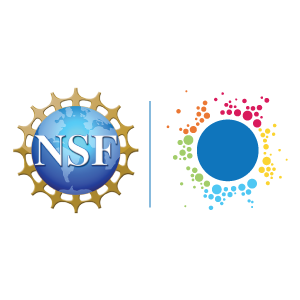By David Boone, Jan Morrison and Davin Sweeney, STEM PUSH Network
And Matthew Closter, NSF INCLUDES Coordination Hub

The NSF Coordination Hub recently featured two important resources: a research brief on Collaborative Change Models and a blog from the STEM PUSH Network (Pathways for Underrepresented Students to Higher Education Network). The two complement each other, with the brief mapping collaborative change models to the NSF INCLUDES five design elements of Collaborative Infrastructure, and the blog illustrating how one of the collaborative change models, a Network Improvement Community (NIC), can work in practice. The Coordination Hub followed up with the leaders of the STEM PUSH Network, which uses the NIC model, to learn more.
The STEM PUSH Network is organized as a networked improvement community, where members commit to working together using a disciplined approach to make headway on a shared aim. Unlike sharing networks, Network Improvement Communities require members to work jointly in a coherent and sustained manner to make changes that could not occur if enacted individually. Poised for growth, the STEM PUSH Network is currently comprised of 17 precollege STEM programs from four cities who are using inquiry cycles to increase the number of racially/ethnically minoritized students who enroll and persist in STEM undergraduate study. The precollege STEM programs test promising change ideas that infuse culturally sustaining approaches into recruitment and instructional practices, student services, relationships with communities and partners, and linkages to other precollege programs and higher education admissions offices.
Precollege STEM program leaders engage in whole network meetings bi-weekly, complete program-specific tasks in-between these meetings, and will begin meeting in their inquiry groups in January 2021 in which they work with other precollege programs focused on testing the same idea for change. To date, network members have completed an in-depth self-study of their program on evidence-based quality standards for broadening participation and analyzed these data as a collective, collaborated with one another to navigate the daunting challenges posed by the COVID-19 pandemic, learned about and reflected on culturally sustaining practices, and planned improvements to how they measure valued student outcomes such as STEM identity, critical thinking and communication. As the network grows and matures to 40 precollege STEM programs across 10 cities, the STEM PUSH Network will disseminate change ideas that are effective in supporting racially/ethnically minoritized students and increasing the power of precollege STEM programs for broadening participation in STEM undergraduate pathways.
STEM PUSH demonstrates how their NIC aligns with the NSF INCLUDES five design elements of collaborative infrastructure through a Vision, Partnership, Goals and Metrics, Leadership and Communication, and Expansion, Sustainability, and Scale. STEM PUSH may have its own unique language and structural components as a NIC, but it follows the same direction as the five design elements, mapped in the research brief.
The Coordination Hub thanks the STEM PUSH Network for sharing how it structures itself as a NIC. Fusing research on collaborative change models with practical examples elevates the conversation on how best to organize and manage a collaboration. Join the STEM PUSH Network by following them on LinkedIn and Twitter.
The Hub would like to collect more examples of how collaborative change models are exemplified, so please share how your project exhibits collaboration.
***
David Boone, PhD is an Assistant Professor in the School of Medicine at the University of Pittsburgh and a member of the STEM PUSH Team.
Jan Morrison is the founding partner of TIES, the Teaching Institute for Excellence in STEM and is a Co-PI of the NSF INCLUDES STEM PUSH Network.
Davin Sweeney is a former University of Rochester admissions counselor and current college counselor in New York City.

